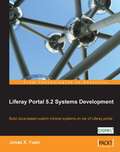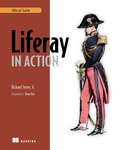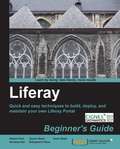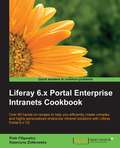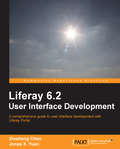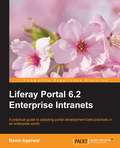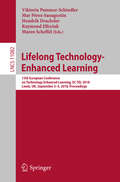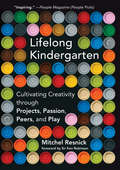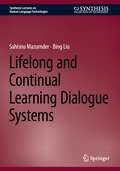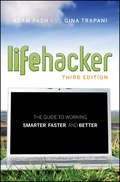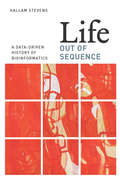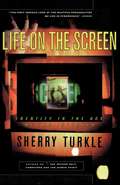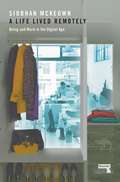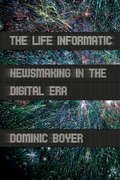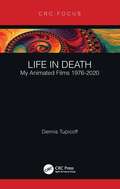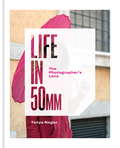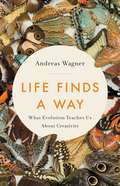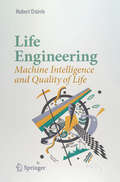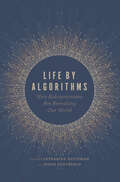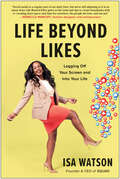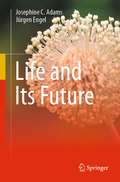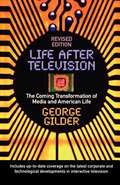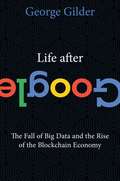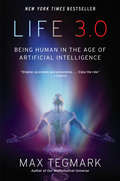- Table View
- List View
Liferay Portal 5.2 Systems Development
by Jonas X. YuanThis book focuses on teaching by example. Every chapter provides an overview, and then dives right into hands-on examples so you can see and play with the solution in your own environment. All code samples run on both the latest Enterprise and Community releases. This book will be most useful to professional Java developers who want to build custom web sites, portals, and highly customized intranet applications using Liferay portal as a framework. This book is for Java developers, and you will get most from the book if you already work with Java but you need not have prior experience on Liferay portal. Although Liferay portal makes heavy use of open source frameworks such as Spring, Hibernate, Struts, and Lucene, no prior experience using these is assumed.
Liferay in Action: The Official Guide to Liferay Portal Development
by Rich SezovSummaryLiferay in Action is a comprehensive and authoritative guide to building portals on the Liferay 6 platform. Fully supported and authorized by Liferay, this book guides you smoothly from your first exposure to Liferay through the crucial day-to-day tasks of building and maintaining an enterprise portal that works well within your existing IT infrastructure.About the TechnologyA portal is a website built around a collection of components that request, display, and share information. Liferay Portal 6, an enterprise-ready development platform, makes it a snap to build portals that integrate with your existing backend systems and provide a rich interactive user experience. Because Liferay uses standard Java and JavaScript, along with built-in SOAP and JSON support for web services, developers can be productive immediately. And since it's available in both a free, open source version as well as a fully-supported commercial edition, it's an affordable solution for almost any business or organizationAbout the BookLiferay in Action is the official guide to building Liferay portal applications using Java and JavaScript. If you've never used Liferay before, don't worry. This book starts with the basics: setting up your development environment and creating a working portal. Then, it builds on that foundation to help you discover social features, tagging, ratings, and more. You'll also explore the Portlet 2.0 API, and learn to create custom themes and reusable templates.Experienced developers will learn how to use new Liferay APIs to build social and collaborative sites, use the message bus and workflow, implement indexing and search, and more. This book was developed in close collaboration with Liferay engineers, so it answers the right questions, and answers them in depth.No experience with Liferay or the Portlets API is required, but basic knowledge of Java and web technology is assumed. Purchase of the print book comes with an offer of a free PDF, ePub, and Kindle eBook from Manning. Also available is all code from the book. What's InsideComplete coverage of Liferay Portal 6Covers both the commercial and open source versionsCustom portlet development using the Portlet 2.0 specLiferay's social network APIAdd functionality with hooks and Ext plugins======================================Table of ContentsPART 1 WORKING WITH LIFERAY AND PORTLETSThe Liferay differenceGetting started with the Liferay development platformPART 2 WRITING APPLICATIONS ON LIFERAY'S PLATFORMA data-driven portlet made easyMVC the Liferay wayDesigning your site with themes and layout templatesMaking your site socialEnabling user collaborationPART 3 CUSTOMIZING LIFERAYHooksExtending Liferay effectivelyA tour of Liferay APIs
Liferay Beginner’s Guide
by Sandeep Nair Robert ChenPart of Packt's Beginner's Guide series, each chapter follows the creation of a fictional neighbourhood site to demonstrate an aspect of Liferay portal with practical examples, screenshots, and step-by-step instructions. All you need in order to benefit from the Liferay Beginner's Guide is programming experience. No prior knowledge of Liferay is required, although experienced Liferay portal programmers who need to get up to speed with its latest features will also find this book useful.
Liferay 6.x Portal Enterprise Intranets Cookbook
by Katarzyna Ziolkowska Piotr FilipowiczIf you are a Java developer or administrator with a technical background and want to install and configure Liferay Portal as an enterprise intranet, this is the book for you. In short, reusable recipes help you realize business goals as working features in Liferay. This book will also give you useful hints on how to easily improve the default functionality of the system and its performance.
Liferay 6.2 User Interface Development
by Jonas X. Yuan Xinsheng ChenA step-by-step tutorial, targeting the Liferay 6.2 version. This book takes a step-by-step approach to customizing the look and feel of your website, and shows you how to build a great looking user interface as well."Liferay 6.2 User Interface Development" is for anyone who is interested in the Liferay Portal. It contains text that explicitly introduces you to the Liferay Portal. You will benefit most from this book if you have Java programming experience and have coded servlets or JavaServer Pages before. Experienced Liferay portal developers will also find this book useful because it explains the latest technologies used in the Liferay Portal. This book is a good reference for Liferay architects as the book also explains different technologies for portlet development and their strong and weak points.
Liferay 6.2 Intranet Portal Development Guide
by Navin AgarwalThis book is for anyone who is interested in the Liferay Intranet Portal. This book is for both beginners and more experienced portal developers who need to create an enterprise intranet portal for their business. It will be handy for IT professionals who know the basics of how the portal technology works and need to integrate different open source technologies.
Lifelong Technology-Enhanced Learning: 13th European Conference on Technology Enhanced Learning, EC-TEL 2018, Leeds, UK, September 3-5, 2018, Proceedings (Lecture Notes in Computer Science #11082)
by Viktoria Pammer-Schindler Mar Pérez-Sanagustín Hendrik Drachsler Raymond Elferink Maren ScheffelThis book constitutes the proceedings of the 13th European Conference on Technology Enhanced Learning, EC-TEL 2018, held in Leeds, UK, in September 2018.The 42 full and short papers, 7 demo papers, and 23 poster papers presented in this volume were carefully reviewed and selected from 142 submissions. This year, the European Conference on Technology-Enhanced Learning (EC-TEL) will engage researchers, practitioners, educational developers, entrepreneurs and policy makers in a joint discussion on how to put science, technology and practice at the service of learning to embrace these challenges on the topic: Lifelong technology enhanced learning: Dealing with the complexity of 21st century challenges. Chapter "" is available open access under a Creative Commons Attribution 4.0 International License via link.springer.com.
Lifelong Kindergarten: Cultivating Creativity through Projects, Passion, Peers, and Play (The\mit Press Ser.)
by Mitchel ResnickHow lessons from kindergarten can help everyone develop the creative thinking skills needed to thrive in today's society.In kindergartens these days, children spend more time with math worksheets and phonics flashcards than building blocks and finger paint. Kindergarten is becoming more like the rest of school. In Lifelong Kindergarten, learning expert Mitchel Resnick argues for exactly the opposite: the rest of school (even the rest of life) should be more like kindergarten. To thrive in today's fast-changing world, people of all ages must learn to think and act creatively—and the best way to do that is by focusing more on imagining, creating, playing, sharing, and reflecting, just as children do in traditional kindergartens.Drawing on experiences from more than thirty years at MIT's Media Lab, Resnick discusses new technologies and strategies for engaging young people in creative learning experiences. He tells stories of how children are programming their own games, stories, and inventions (for example, a diary security system, created by a twelve-year-old girl), and collaborating through remixing, crowdsourcing, and large-scale group projects (such as a Halloween-themed game called Night at Dreary Castle, produced by more than twenty kids scattered around the world). By providing young people with opportunities to work on projects, based on their passions, in collaboration with peers, in a playful spirit, we can help them prepare for a world where creative thinking is more important than ever before.
Lifelong and Continual Learning Dialogue Systems (Synthesis Lectures on Human Language Technologies)
by Sahisnu Mazumder Bing LiuThis book introduces the new paradigm of lifelong and continual learning dialogue systems to endow dialogue systems with the ability to learn continually by themselves through their own self-initiated interactions with their users and the working environments. The authors present the latest developments and techniques for building such continual learning dialogue systems. The book explains how these developments allow systems to continuously learn new language expressions, lexical and factual knowledge, and conversational skills through interactions and dialogues. Additionally, the book covers techniques to acquire new training examples for learning new tasks during the conversation. The book also reviews existing work on lifelong learning and discusses areas for future research.
Lifehacker
by Adam Pash Gina TrapaniA new edition, packed with even more clever tricks and methods that make everyday life easierLifehackers redefine personal productivity with creative and clever methods for making life easier and more enjoyable. This new edition of a perennial bestseller boasts new and exciting tips, tricks, and methods that strike a perfect balance between current technology and common sense solutions for getting things done. Exploring the many ways technology has changed since the previous edition, this new edition has been updated to reflect the latest and greatest in technological and personal productivity.The new "hacks" run the gamut of working with the latest Windows and Mac operating systems for both Windows and Apple, getting more done with smartphones and their operating systems, and dealing with the evolution of the web. Even the most tried-and-true hacks have been updated to reflect the contemporary tech world and the tools it provides us.Technology is supposed to make our lives easier by helping us work more efficiently. Lifehacker: The Guide to Working Smarter, Faster, and Better, Third Edition is your guide to making that happen!
Life Out of Sequence: A Data-Driven History of Bioinformatics
by Hallam StevensThirty years ago, the most likely place to find a biologist was standing at a laboratory bench, peering down a microscope, surrounded by flasks of chemicals and petri dishes full of bacteria. Today, you are just as likely to find him or her in a room that looks more like an office, poring over lines of code on computer screens. The use of computers in biology has radically transformed who biologists are, what they do, and how they understand life. In "Life Out of Sequence," Hallam Stevens looks inside this new landscape of digital scientific work. aaaaaaaaaaaStevens chronicles the emergence of bioinformaticsOCothe mode of working across and between biology, computing, mathematics, and statisticsOCofrom the 1960s to the present, seeking to understand how knowledge about life is made in and through virtual spaces. He shows how scientific data moves from living organisms into DNA sequencing machines, through software, and into databases, images, and scientific publications. What he reveals is a biology very different from the one of predigital days: a biology that includes not only biologists but also highly interdisciplinary teams of managers and workers; a biology that is more centered on DNA sequencing, but one that understands sequence in terms of dynamic cascades and highly interconnected networks. "Life Out of Sequence "thus offers the computational biology community welcome context for their own work while also giving the public a frontline perspective of what is going on in this rapidly changing field. "
Life on the Screen: Identity in the Age of the Internet
by Sherry TurkleLife on the Screen is a book not about computers, but about people and how computers are causing us to re-evaluate our identities in the age of the Internet. We are using life on the screen to engage in new ways of thinking about evolution, relationships, politics, sex, and the self. Life on the Screen traces a set of boundary negotiations, telling the story of the changing impact of the computer on our psychological lives and our evolving ideas about minds, bodies, and machines. What is emerging, Turkle says, is a new sense of identity-- as decentered and multiple. She describes trends in computer design, in artificial intelligence, and in people's experiences of virtual environments that confirm a dramatic shift in our notions of self, other, machine, and world. The computer emerges as an object that brings postmodernism down to earth.
A Life Lived Remotely
by Siobhan McKeownWhat happens when we take our lives online? How are we being changed by immersion in the internet? How do we know the difference between work and life when one seems to blend into the other?Part memoir, part theory, A Life Lived Remotely tells the story of a transition to the digital age. It follows the author's journey through remote work, framing it within the exponential growth of the internet and the rapid spread of neoliberalism. It examines how we are being changed by the internet, how we experience that change, and at the anxieties and issues that arise. A moment's pause in a world of fast-paced communication, it provides a critical reflection on what it means to come of age along with the internet.
The Life Informatic
by Dominic BoyerNews journalism is in the midst of radical transformation brought about by the spread of digital information and communication technology and the rise of neoliberalism. What does it look like, however, from the inside of a news organization? In The Life Informatic, Dominic Boyer offers the first anthropological ethnography of contemporary office-based news journalism. The result is a fascinating account of journalists struggling to maintain their expertise and authority, even as they find their principles and skills profoundly challenged by ever more complex and fast-moving streams of information. Boyer conducted his fieldwork inside three news organizations in Germany (a world leader in digital journalism) supplemented by extensive interviews in the United States. His findings challenge popular and scholarly images of journalists as roving truth-seekers, showing instead the extent to which sedentary office-based "screenwork" (such as gathering and processing information online) has come to dominate news journalism. To explain this phenomenon Boyer puts forth the notion of "digital liberalism"-a powerful convergence of technological and ideological forces over the past two decades that has rebalanced electronic mediation from the radial (or broadcast) tendencies of the mid-twentieth century to the lateral (or peer-to-peer) tendencies that dominate in the era of the Internet and social media. Under digital liberalism an entire regime of media, knowledge, and authority has become integrated around liberal principles of individuality and publicity, both unmaking and remaking news institutions of the broadcast era. Finally, Boyer offers some scenarios for how news journalism will develop in the future and discusses how other intellectual professionals, such as ethnographers, have also become more screenworkers than fieldworkers.
Life in Death: My Animated Films 1976-2020
by Dennis TupicoffDeath—the very word is resonant with emotion, imagery, and meaning. It is the ultimate life-event that all living things will eventually experience; as such, it comes as no surprise that death is often a popular theme of literature, art, games, cinema, music, and even animation. Dennis Tupicoff, world-renowned animator, writer, and producer, is an expert on the narrative application of death in animation. Take a journey with Tupicoff as he goes in-depth into the many themes, associations, and practices found in film and especially animation. Life in Death: My Animated Films 1976–2020 explores death as it relates to experience, storytelling, theory, and narrative. The examples in the very readable text are organized into three broad categories: cartoon, documentary, and hybrids of various types. KEY FEATURES Explores death as a narrative theme within cinema and animation Biographical insight into Dennis Tupicoff’s works and how the subject of death impacted these completed award-winning films Special online access to Dennis Tupicoff’s animated works In-depth exploration into ten of Dennis Tupicoff’s most influential animations
Life in 50mm: The Photographer's Lens
by Tanya NagarThe 50mm lens is for photography purists. It's cheap to buy, light to carry and gets amazing results. It also makes even the greatest photographers try just that little bit harder to frame the perfect image. As a result, it's the first thing anyone buys after their camera. Life in 50mm shares the greatest photos - and the personal experiences that led to them - from some of today's leading photographers. It also explains why they chose to reject complicated modern zooms and express themselves through the 50mm prime in the first place.
Life in 50mm: The Photographer's Lens
by Tanya NagarThe 50mm lens is for photography purists. It's cheap to buy, light to carry and gets amazing results. It also makes even the greatest photographers try just that little bit harder to frame the perfect image. As a result, it's the first thing anyone buys after their camera. Life in 50mm shares the greatest photos - and the personal experiences that led to them - from some of today's leading photographers. It also explains why they chose to reject complicated modern zooms and express themselves through the 50mm prime in the first place.
Life Finds a Way: What Evolution Teaches Us About Creativity
by Andreas WagnerHow the principles of biological innovation can help us overcome creative challenges in art, business, and scienceIn Life Finds a Way, biologist Andreas Wagner reveals the deep symmetry between innovation in biological evolution and human cultural creativity. Rarely is either a linear climb to perfection--instead, "progress" is typically marked by a sequence of peaks, plateaus, and pitfalls. For instance, in Picasso's forty-some iterations of Guernica, we see the same combination of small steps, incessant reshuffling, and large, almost reckless, leaps that characterize the way evolution transformed a dinosaur's grasping claw into a condor's soaring wing. By understanding these principles, we can also better realize our own creative potential to find new solutions to adversity.Ultimately, Life Finds a Way offers a new framework for the nature of creativity, enabling us to better adapt, grow, and change in art, business, or science--that is, in life.
Life Engineering: Machine Intelligence and Quality of Life
by Hubert OsterleMachine Intelligence is changing every aspect of our lives. Internet traffic and sensors in households, cars, and wearables provide data that oligopolistic companies collect and use to extract patterns of human behavior. Further, active digital assistants are taking over more and more of our everyday decisions. Humanity is on the verge of an evolutionary leap and it is time to determine if this development will benefit people’s wellbeing or will just mean the accumulation of capital and power with no regard for quality of life. This book integrates the perspectives of various disciplines that are striving to establish resilient foundations – computer science, economics and social sciences, political science, psychology, philosophy, neuroscience, ethics and religion – in order to clarify a number of positions and, as a result, objectify the discussions. Written by Hubert Osterle, a researcher working at the interface of these disciplines, the book promotes debate on the future of man and machine, on happiness and evolution and on the major changes brought about by digital technology. Last but not least, it is a manifesto calling for a new – integrated – discipline to be founded: life engineering.
Life by Algorithms: How Roboprocesses Are Remaking Our World
by Hugh Gusterson Catherine BestemanComputerized processes are everywhere in our society. They are the automated phone messaging systems that businesses use to screen calls; the link between student standardized test scores and public schools’ access to resources; the algorithms that regulate patient diagnoses and reimbursements to doctors. The storage, sorting, and analysis of massive amounts of information have enabled the automation of decision-making at an unprecedented level. Meanwhile, computers have offered a model of cognition that increasingly shapes our approach to the world. The proliferation of “roboprocesses” is the result, as editors Catherine Besteman and Hugh Gusterson observe in this rich and wide-ranging volume, which features contributions from a distinguished cast of scholars in anthropology, communications, international studies, and political science. Although automatic processes are designed to be engines of rational systems, the stories in Life by Algorithms reveal how they can in fact produce absurd, inflexible, or even dangerous outcomes. Joining the call for “algorithmic transparency,” the contributors bring exceptional sensitivity to everyday sociality into their critique to better understand how the perils of modern technology affect finance, medicine, education, housing, the workplace, food production, public space, and emotions—not as separate problems but as linked manifestations of a deeper defect in the fundamental ordering of our society.
Life Beyond Likes: Logging Off Your Screen and Into Your Life
by Isa WatsonWith so much of our lives lived online, we&’ve never been more connected—or disconnected from what&’s most important to us.It&’s time to let go of our curated online worlds and get beyond our need for likes.For all that we think we&’re getting out of social media, we&’re also getting duped. The perfection echo chamber oftentimes makes us feel like we&’re getting left behind. The truth is, life is messy, but curated online fabulousness makes it hard to let our true selves show, and it impedes our ability to have real, meaningful connections. Depression, anxiety, and suicide are also on the rise, and the virtual world is partially to blame, affecting our self-worth, our friendships, and the way we choose to navigate our real lives. As the founder and CEO of Squad, an app company built on connectedness, Isa Watson knows firsthand why we need to learn how to be more genuine. The digital world is her lifeblood, but it&’s also been an Achilles&’ heel: She struggled privately with some of the biggest challenges life can throw at you, while online she seemed to be living her best life—earning high-profile accolades, taking fabulous trips, and partying with the likes of many big name celebrities. It took a personal crisis to make her realize that she needed to change.In Life Beyond Likes, she gets real, sharing practical guidance on:Getting over the addiction to likes, and letting your true self shineRecognizing your own damaging habits and developing healthy onesDetermining when a friendship has run its courseGetting comfortable with discomfort in order to make real connectionsDrawing from a wealth of experiences including being the youngest published chemist in the world, working as executive in the upper echelons at JPMorgan Chase, and founding her own company, Isa helps readers better understand what constitutes success, identify what&’s really important, and achieve a balance between the curated online world and the enriching, emotionally nourishing world right in front of us.
Life and Its Future
by Josephine C. Adams Jürgen EngelThis book is aimed at those who wish to understand more about the molecular basis of life and how life on earth may change in coming centuries. Readers of this book will gain knowledge of how life began on Earth, the natural processes that have led to the great diversity of biological organisms that exist today, recent research into the possibility of life on other planets, and how the future of life on earth faces unprecedented pressures from human-made activities. Readers will obtain a perspective on the potential risks of chemical or nuclear warfare, and the ever-increasing risks from human activities that are causing pollution and climate change with global heating. Readers will also learn about ongoing research efforts to generate “designer lifeforms” through synthetic biology and applications of artificial intelligence. The book makes an integrated, up-to-date, overview of topics often considered as separate fields. It should be valuable to students, teachers, and people who are concerned about the future of life.
Life After Television
by George GilderPredicts that personal computers linked into a global network will soon replace television, and thereby overthrow the tyranny of mass media, renew individual power, and promote democracy worldwide. Urges American business to get on the ball with fiber optics. Reprinted from the 1990 edition published by Whittle Books. No index or bibliography.
Life After Google: The Fall of Big Data and the Rise of the Blockchain Economy
by George Gilder“Google’s algorithms assume the world’s future is nothing more than the next moment in a random process. George Gilder shows how deep this assumption goes, what motivates people to make it, and why it’s wrong: the future depends on human action.” — Peter Thiel, founder of PayPal and Palantir Technologies and author of Zero to One: Notes on Startups, or How to Build the Future. “If you want to be clued in to the unfolding future, then you have come to the right place. For decades, George Gilder has been the undisputed oracle of technology’s future. Are giant companies like Google, Amazon, and Facebook the unstoppable monopolistic juggernauts that they seem, or are they dysfunctional giants about to be toppled by tech-savvy, entrepreneurial college dropouts?” — Nick Tredennick, Ph.D., Chief Scientist, QuickSilver Technolog Silicon Valley’s Nervous Breakdown The Age of Google, built on big data and machine intelligence, has been an awesome era. But it’s coming to an end. In Life after Google, George Gilder—the peerless visionary of technology and culture—explains why Silicon Valley is suffering a nervous breakdown and what to expect as the post-Google age dawns. Google’s astonishing ability to “search and sort” attracts the entire world to its search engine and countless other goodies—videos, maps, email, calendars….And everything it offers is free, or so it seems. Instead of paying directly, users submit to advertising. The system of “aggregate and advertise” works—for a while—if you control an empire of data centers, but a market without prices strangles entrepreneurship and turns the Internet into a wasteland of ads. The crisis is not just economic. Even as advances in artificial intelligence induce delusions of omnipotence and transcendence, Silicon Valley has pretty much given up on security. The Internet firewalls supposedly protecting all those passwords and personal information have proved hopelessly permeable. The crisis cannot be solved within the current computer and network architecture. The future lies with the “cryptocosm”—the new architecture of the blockchain and its derivatives. Enabling cryptocurrencies such as bitcoin and ether, NEO and Hashgraph, it will provide the Internet a secure global payments system, ending the aggregate-and-advertise Age of Google. Silicon Valley, long dominated by a few giants, faces a “great unbundling,” which will disperse computer power and commerce and transform the economy and the Internet. Life after Google is almost here. For fans of "Wealth and Poverty," "Knoweldge and Power," and "The Scandal of Money."
Life 3.0: Being Human in the Age of Artificial Intelligence
by Max TegmarkNew York Times Best SellerHow will Artificial Intelligence affect crime, war, justice, jobs, society and our very sense of being human? The rise of AI has the potential to transform our future more than any other technology—and there&’s nobody better qualified or situated to explore that future than Max Tegmark, an MIT professor who&’s helped mainstream research on how to keep AI beneficial. How can we grow our prosperity through automation without leaving people lacking income or purpose? What career advice should we give today&’s kids? How can we make future AI systems more robust, so that they do what we want without crashing, malfunctioning or getting hacked? Should we fear an arms race in lethal autonomous weapons? Will machines eventually outsmart us at all tasks, replacing humans on the job market and perhaps altogether? Will AI help life flourish like never before or give us more power than we can handle? What sort of future do you want? This book empowers you to join what may be the most important conversation of our time. It doesn&’t shy away from the full range of viewpoints or from the most controversial issues—from superintelligence to meaning, consciousness and the ultimate physical limits on life in the cosmos.
